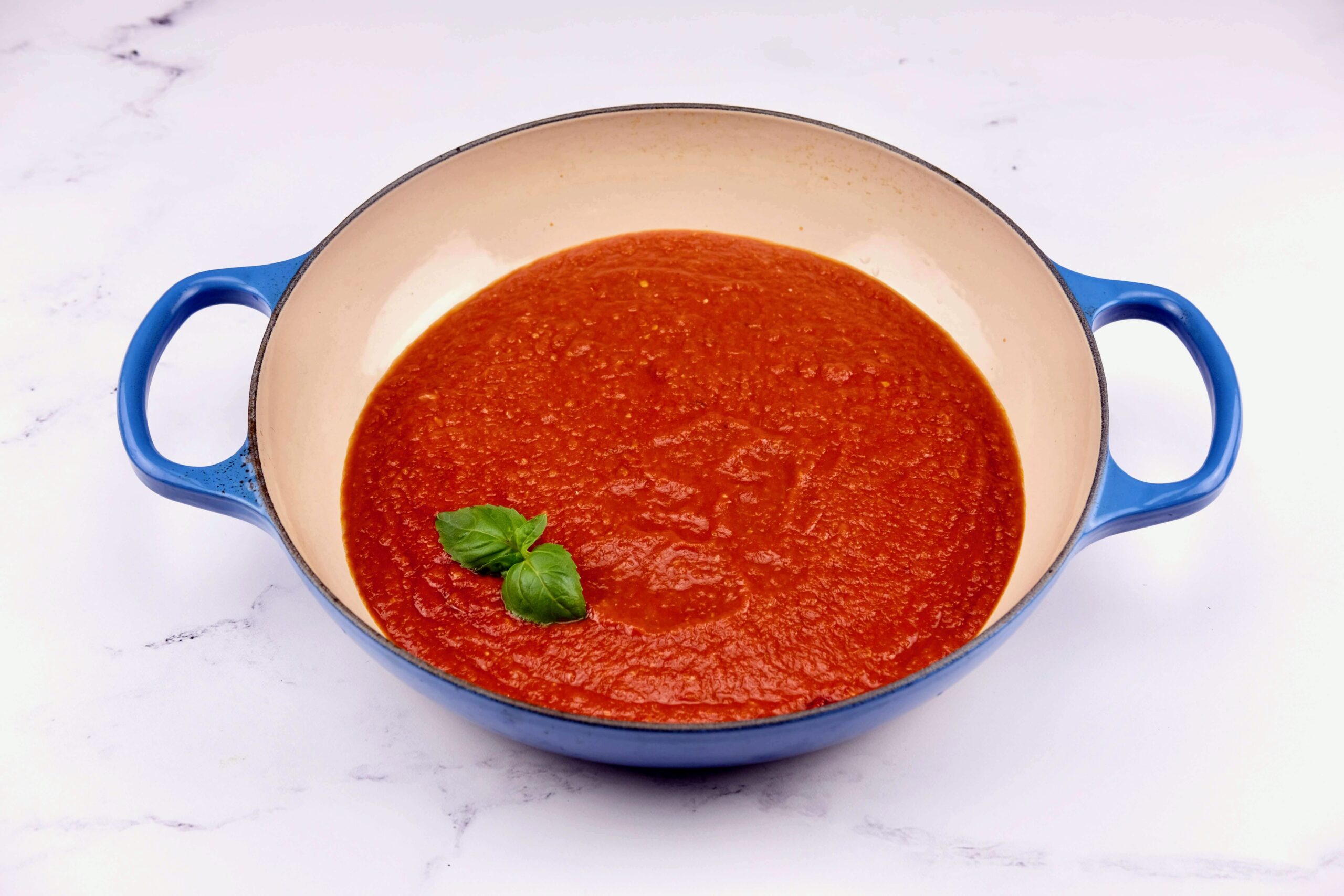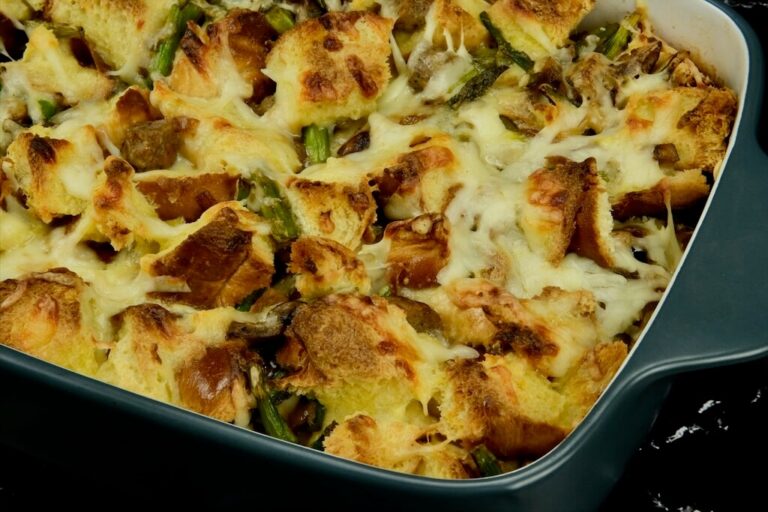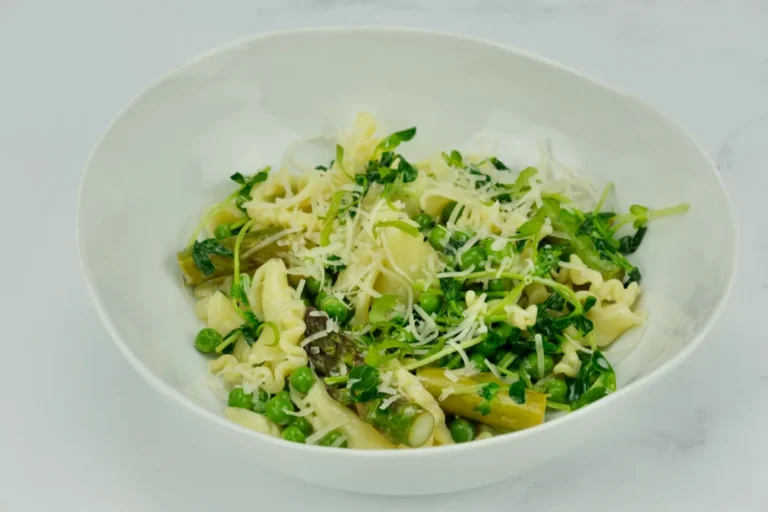Versatile, Everyday Vegetarian Red Sauce
About this Recipe
By: Rachel
Nobody told me that keeping two adults (and three dogs) fed seven days a week would be this time-consuming—especially when said adults both desire tasty food and a fair amount of variety. On the nights when we’re out of steam and ideas, pasta with a simple vegetarian red sauce always saves the day.
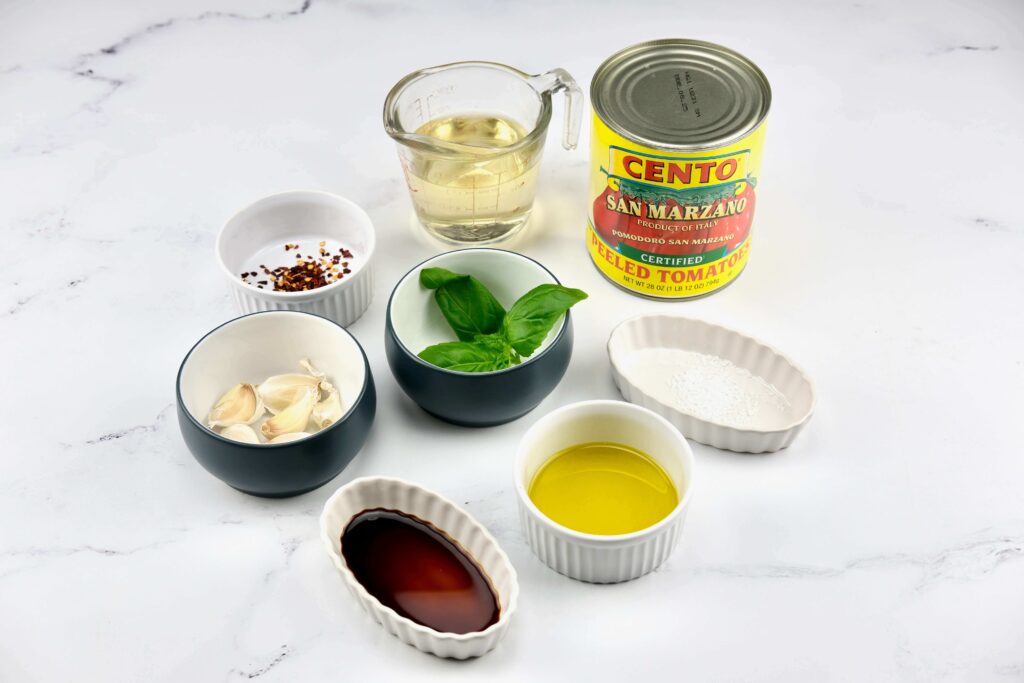
On those Monday evenings when we realize there’s no dinner plan, we never seem to tire of pasta with red sauce—it’s become a go-to on the days when we can’t quite get it together. It’s a bit like marinara sauce, but with a richer, slower-simmered flavor that makes it feel more like a real meal than a backup plan. I usually have a bag of this red sauce in the freezer since I freeze half each time I make a batch, but even if I don’t, the meatless version of this sauce comes together in less than 45 minutes, a little longer for the meat version (during which time you can have a glass of wine, cook some pasta, grate a little cheese)—dinner will be on the table in less than an hour.
What Makes a Great Vegetarian Red Sauce
A solid vegetarian red sauce doesn’t need a long ingredient list or complicated steps—it just needs good tomatoes, the right amount of olive oil, and time to simmer. This one checks all the boxes: garlicky, a little spicy, and rich enough to feel special without relying on meat or dairy. The olive oil gives it body, while the wine (or stock) adds depth. You can let it bubble away while you prep pasta or pour a glass of wine—whatever kind of night it is.
It’s similar to a classic marinara sauce, but a little more layered—slightly richer, a touch bolder, and endlessly customizable. This is the kind of vegetarian red sauce that works just as well on a lazy Monday as it does when you’re cooking for friends. Plus, it freezes like a dream, so future you will thank you!
How to Use This Versatile Sauce
Of course, it’s perfect on pasta (we’re partial to spaghetti), but this vegetarian red sauce has range. Think of it like a more robust, homemade take on marinara—just as flexible, but with a little extra depth. Use it as the base for a cozy baked ziti or lasagna, spoon it over roasted eggplant, or keep things simple with garlic bread and a side salad. It also makes a great pizza sauce in a pinch.
I usually freeze half the batch in a quart container—then when dinner sneaks up on us, all we have to do is boil some pasta and reheat the sauce. Having this in the freezer has saved many a weeknight.
Versatile, Everyday Vegetarian Red Sauce
Ingredients
- 4 tablespoons (55g) olive oil
- 6 cloves garlic
- 1 teaspoon or more crushed red pepper (adjust to preferred spice)
- ¾ cup (200 mL) dry white wine, red wine, or stock
- 1 large can (28oz or 800g) San Marzano tomatoes
- Kosher salt to taste
Step by Step Instructions
Step 1
- Using a wide, deep, heavy saucepan, heat olive oil over medium-low heat (it will seem like a lot, but the olive oil will make the sauce rich and deep), and add the garlic and red pepper. You may chop the garlic or simply crush it with the side of your knife.Sauté gently for 2-3 minutes—you want the garlic to soften and become fragrant, but not brown.

Step 2
- Add the wine or stock, turn the heat to medium-high, and allow to cook for 2 minutes. Return the heat to medium-low and add the tomatoes, crushing them in your fist before you add them to the pan.
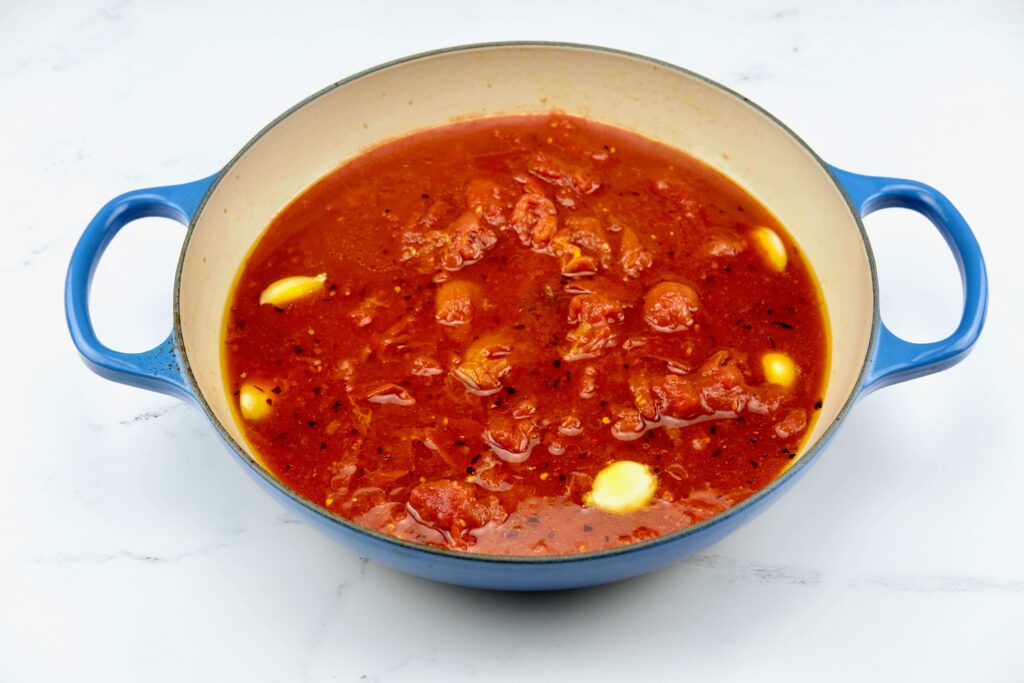
Step 3
- Simmer on medium-low, bubbling very gently (tomato sauce splatters easily, so be careful to keep your burner from getting too hot). Your sauce will be ready in about 30 minutes, or when most of the water is cooked off and you have a nice, thick sauce.* The longer you let it cook, the deeper and richer the flavor becomes. I like to let mine simmer gently for several hours.

Step 4
- Add salt to taste. I like a little sweetness in my sauce to offset the acidity of the tomatoes, so I usually add 1-2 teaspoons balsamic vinegar. Others add a little sugar. Some add a parmesan rind to the last stage of cooking. Fresh herbs, like basil, also add a nice flavor, so experiment and see what you like!The texture of this sauce is nice as it is, but you can purée in a food processor or blender for a smoother sauce once it has cooled (keep the blender speed low, however, or you may grind the tomato seeds—ending up with a bright orange, somewhat bitter sauce). *You can help this along by cooking a pot of spaghetti (or other pasta) two minutes short of al dente, draining it, and finishing it directly in the sauce, as the pasta will absorb additional moisture.
Optional: You can make this sauce with fresh tomatoes when in season. Double the quantity because of their high water content, and roast them in the oven before making the sauce.

